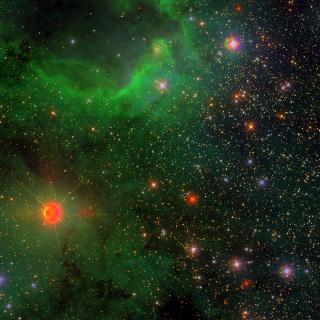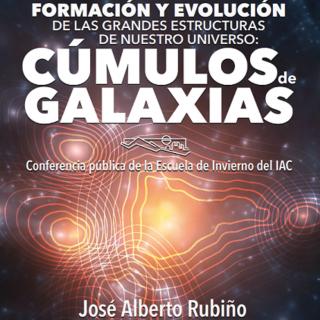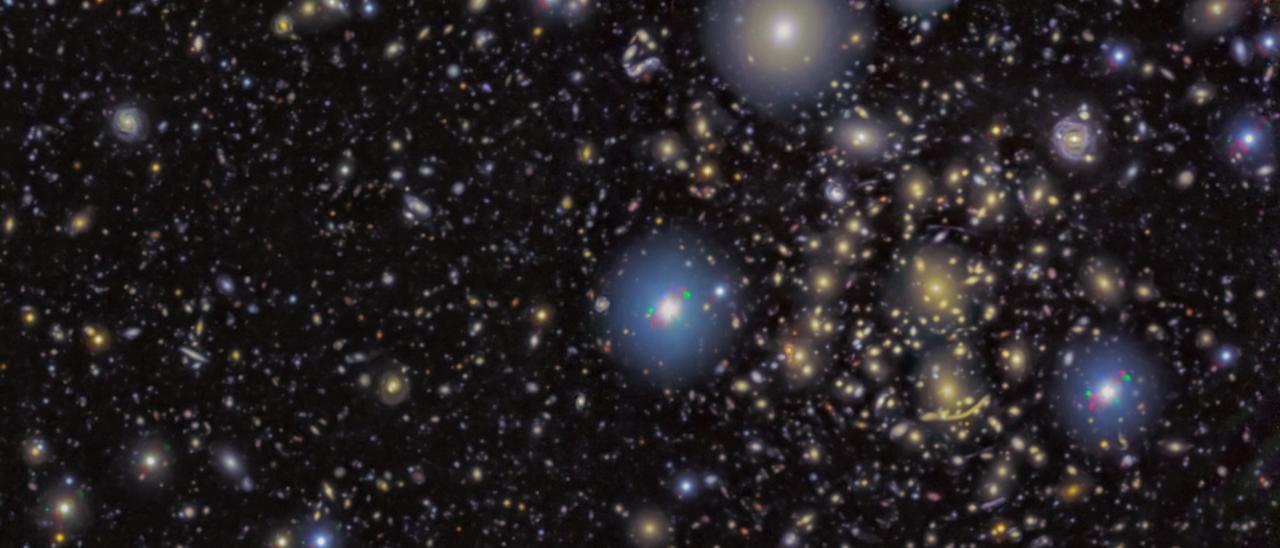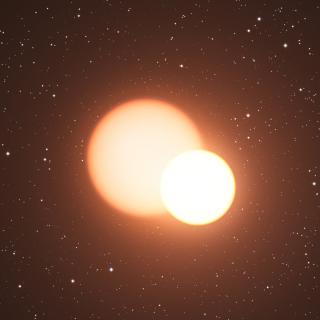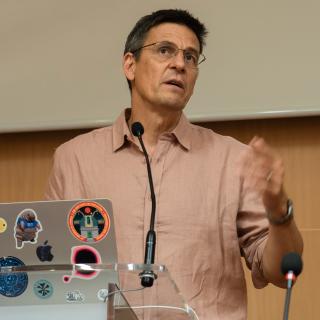Image of the cluster of galaxies Abell 370.The centre of the cluster is in the upper right of the image. In the same zone one can see the images of galaxies amplified by gravitation, some of them showing highly deformed and lengthened morphologies, which are termed arcs. Credits: GRANTECAN/SHARDS Frontier Fields
A team of researchers from the cosmology group at the Instituto de Astrofísica de Canarias has obtained one of the most accurate measurements of the masses of clusters of galaxies, and of their relation with the amount of hot gas in these clusters. To do this they have studied the dynamics of the galaxies in 570 clusters selected from the catalogue produced by the Planck satellite (ESA). This study has been produced during four years of work, in which over 10,000 spectra have been obtained with the Telescopio Nazionale Galileo (TNG) and the Gran Telescopio Canarias (GTC) at the Roque de los Muchachos Observatory (Garaf-ia, La Palma, Canary Islands) as well as data from the public archive of the Sloan Digital Sky Survey (SDSS). The result allows the researchers to infer the quantity of dark matter in the Universe.
Clusters of galaxies are the largest gravitatonally bound structures in the universe. Measuring their distributions in space and time gives one of the most powerful ways for modern cosmology to determine the origin and the energy content of the universe, its rate of expansion during cosmic evolution, and the details of the process of formation of all the large scale structure which we can observe in the current universe.
These huge clusters are not made up only of galaxies, which in fact comprise less than 2% of their total mass. In addition they contain extremely hot gas, which constitutes some 15% of the mass, and a great deal of dark matter making up over 80% of the total mass. The “multi-component” nature of the clusters of galaxies means that they can be studied using a wide variety of observational techniques. While the hot gas can be observed in X-rays, and in microwaves, the galaxy component is mainly observable in the optical and the infrared.
But to study the distribution of the dark matter we need to use several indirect methods. Generally the total mass (which includes the dark component) is usually traced out using the gravitational lensing effect produced by the major concentration of mass in the clusters on the images of objects behing them along the line of sight. These measurements usually give high accuracy. However this new study has used the measurements of the velocities of the galaxies to deduce the total gravity of the clusters, and has for the first time reached an accuracy comparable to the measurements using gravitational lensing.
Using microwave maps from the Planck satellite it has also been possible to estimate the mas of gas in the clusters and, indirectly, derive the total mass. We should expect that the masses from all the techniques are equal, giving a single value for the mass of any cluster. But this does not occur, because each technique suffers from specific intrinsic difficulties. Even so, by comparing the results the differences can be measured quite accurately, and so the true masses of galaxy clusters can be better known.
Historic mileston in the precision of the measurements
With this aim in mind, the teach of researchers used the two catalogues PSZ1 and PSZ2 of galaxy clusters detected by the Planck satellite using their signals in microwaves which provides an estimate of the masses of the clusters using the microwave signals. In addition the dynamic masses of the clusters have been estimated by measuring the radial velocities of the galaxies using spectroscopy. These observations were made with the Telescopio Nazionale Galileo (TNG) and the Gran Telescopio Canarias (GTC) at the Roque de los Muchachos Observatory. “We have made a major observational effort over several years, exploring over 400 clusters of galaxies from the PSZ1 and PSZ2 catalogues” notes Rafael Barrena, an IAC astrophysicist and a member of the observing team.
“The results obtained from the PSZ1 catalogue of Planck show that estimates of mass using their gas content yield values some 20% lower that thos based on the dynamics of their galaxies” explains Antonio Ferragamo, and IAC researcher who has based his doctoral thesis on this work. “These results are confirmed for the clusters in the Planck PSZ2 catalogue, and are compatible with measurements by other authors who have applied different techniqus (X-rays, gravitational lensing etc.)” he adds.
Alejandro Aguado, an IAC researcher who has also based his doctoral thesis on the results of this work, points out that “The importance of the study is, on the one hand the high precision obtained using the dynamical measurement of the mass, with an error of less than 10% which is a historic milestone in measurements of this quantity, and on the other hand the consistency with the values estimate by the Planck consortium (Planck Col. XX, 2014). “ At the moment very few measurements give such a low statistical error, and this is due to the large number of clusters used in the sample”
New questions in Cosmology
From a cosmological perspective the confirmation of these values presents us with new questions. “From the data of the Planck satellite we find that there is an apparent disagreement between the quantity of dark matter in the universe predicted using the measures of the abundances of clusters of galaxies and that inferred from the maps of the cosmic microwave background (CMB), the fossil radiation left from the origin of the universe” explains José Alberto Rubiño, an IAC astrophysicist and a member of the research group. “The values of the dark matter inferred from the abundances of galaxy clusters are 5% bigger than those based on measurements of the CMB, and in turn these latter measurements indicate that the quantity of galaxy clusters we have detected should have been slightly bigger” he says.
The results found in the present study which has recently been published in the specialized journal Astronomy and Astrophysics, show that the abundances of galaxy clusters and the data from the CMB lead to cosmological models which are slightly different, a disagreement already anticipated by the Planck collaboration. “If the difference between the masses inferred using the gas and the dynamical masses had been around 35% instead of 20% as we measured, this slight tension between the reconstructed cosmological models would have disappeared” notes Rubiño. “Resolving this discrepancy could give us a tool to determine, in future, the mass of the neutrinos via their effects on cosmology, or even show us that we need to modify the standard cosmological model, or even General Relativity” stresses the researcher.
“Explaining this apparent discrepancy is one of the major questions in current cosmology, which is still there after our work, and which will need to be investigated in the coming years” says Barrena. “Space missions such as EUCLID (ESA) or Litebird (JAXA/ESA) in which the IAC is an active participant, will play an essential role in the very near future“ he concludes.
Other IAC researchers who have participated in this project are Alina Streblyanska, Denis Tramonte, Ricardo Génova Santos, Angela Hempel, and Heidi Lietzen.
Related articles:
Ferragamo et al: ”Velocity dispersion and dynamical mass for 270 galaxy clusters in the Planck PSZ1 catalogue”, Astronomy and Astrophysics, Volume 655, November 2021. DOI: https://doi.org/10.1051/0004-6361/202140382
Aguado-Barahona et al: “Velocity dispersion and dynamical masses for 388 galaxy clusters and groups. Calibrating the MSZ-Mdyn scaling relation for the PSZ2 sample”, Astronomy and Astrophysics, November 2021. DOI: https://doi.org/10.1051/0004-6361/202039980
Contacts:
Rafael Barrena, rbarrena [at] iac.es (rbarrena[at]iac[dot]es)
José Alberto Rubiño Martín. jalberto [at] iac.es (jalberto[at]iac[dot]es)
